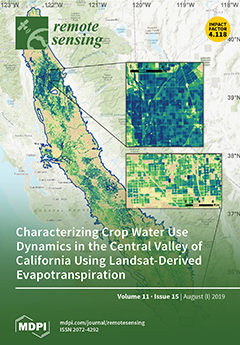Explosives contaminate millions of hectares from various sources (partial detonations, improper storage, and release from production and transport) that can be life-threatening, e.g., landmines and unexploded ordnance. Exposure to and uptake of explosives can also negatively impact plant health, and these factors can
[...] Read more.
Explosives contaminate millions of hectares from various sources (partial detonations, improper storage, and release from production and transport) that can be life-threatening, e.g., landmines and unexploded ordnance. Exposure to and uptake of explosives can also negatively impact plant health, and these factors can be can be remotely sensed. Stress induction was remotely sensed via a whole-plant hyperspectral imaging system as two genotypes of
Zea mays, a drought-susceptible hybrid and a drought-tolerant hybrid, and a forage
Sorghum bicolor were grown in a greenhouse with one control group, one group maintained at 60% soil field capacity, and a third exposed to 250 mg kg
−1 Royal Demolition Explosive (RDX). Green-Red Vegetation Index (GRVI), Photochemical Reflectance Index (PRI), Modified Red Edge Simple Ratio (MRESR), and Vogelmann Red Edge Index 1 (VREI1) were reduced due to presence of explosives. Principal component analyses of reflectance indices separated plants exposed to RDX from control and drought plants. Reflectance of
Z.
mays hybrids was increased from RDX in green and red wavelengths, while reduced in near-infrared wavelengths. Drought
Z.
mays reflectance was lower in green, red, and NIR regions.
S.
bicolor grown with RDX reflected more in green, red, and NIR wavelengths. The spectra and their derivatives will be beneficial for developing explosive-specific indices to accurately identify plants in contaminated soil. This study is the first to demonstrate potential to delineate subsurface explosives over large areas using remote sensing of vegetation with aerial-based hyperspectral systems.
Full article





